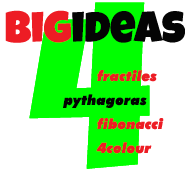NEVER TEACH CHiLDREN
TO READ
UNLESS
YOU FIRST TEACH THEM TO LOVE READING.
It seems the argument about how to teach reading, has been hijacked by 2 main options,
the phonics or whole word approaches.
BRIEF HISTORY OF TEACHING READING
1800 – 1900: The Combined Word and Phonic Method
1900 – 1930: Sounds taught first.
1930 – 1965: Whole Word becomes the dominant method using the dreaded Flash cards.
1965 – 1975: Some schools return to phonics. Most schools, however, stick with the
Look/Say method, and include “analytic phonics.”
1983: “Synthetic Phonics”, not Whole Word
1975 – 2000: More confusing is the Whole Language Approach
1998: Importance of knowing grapheme/phonemes
2000: – “Balanced Literacy."
2005: Systemic phonics. “Integrated” approach includes the Big Five: phonemic awareness,
phonics, fluency, vocabulary, and comprehension.
2006: The Rose Report, singles out and fully embraces only synthetic phonics.
WHERE’s the LOVE?? I mean really, WHERE IS THE LOVE?
Arguments are about techniques and not,
interest, enthusiasm, curiosity and WELL LOVE OF READING, LEARNING AND WORDS.
STEP ASIDE
and stop teaching them with sight words from hell and start teaching them to love reading.
NO HANDS-OFF APPROACHES
like running records, testing, online reading assessments, no exit strategies.
Get rid of the dreaded sight words and levelled readers. Pick books they will love, let them pick books
they are interested to read like Dinosaurs, Superman, Comics, Bugs, Space, and the things that excite them.
DON’T PUSH
children to read, inspire them to read.
Reading is not a class you teach but an inspiring reading culture you build.
Kids can absolutely exceed our expectations if they are inspired.
INFINITELY DIVERSE
Some of my kids find things they love and just read, some figure out how to decode words themselves,
and nothing stops them from reading everything they could lay their hands on.
Black Holes was a topic one of my reluctant readers launched into – amazingly complex words
and dense language, armed with an iPad and his enthusiasm he deciphered the text and wanted more.
SIT THERE WITH THE KIDS/KID AND ENJOY THE BOOKS
with the kids. Discuss the words, marvel at the characters, pretend you are one of them, act it out,
and discuss how it feels to be angry or happy or lonely, ask WHY WHY WHY? Which leads to…….
AND SECOND YOU TEACH THEM CRITICAL THINKING & LOGIC
By teaching them all to read without critical thinking and logic, we leave kids at the mercy of
TWITTER, FACEBOOK and identification of the alphabet required to send TEXT MESSAGES.
READING CAN BE THE DEVIL’S WORK
and delivers the heinous crimes of online cyberbullying, pranking rumour mongering, hacking and teenage suicide.
RESEARCH
suggests that explicit instruction in critical thinking makes kids smarter, more independent, and more creative.
And I think more able to cope with the digital demons of the future.
DEVELOP
thinking critical readers. Who ask questions, ponder alternatives, and consider options.
And don’t just accept the first thing they see, read or hear.
Readers that go beyond the immediate response and think deeper.
Readers who are not seduced by 24-hour shallow dive but go deeper.
DON’T PUSH
children to read inspire them to read.
Reading is not a class you teach but an inspiring reading culture you build.
Kids can absolutely exceed our expectations if they are inspired and love what they do.
“WHY” IS THE CRITICAL THINKING MASTER QUESTION.
Why did this happen? What else might he have done? What is the evidence to support your theory?
CRITICAL READING OF
a text and thinking ABOUT a text enables you to make your own arguments. As a critical thinker and writer, you make judgments and interpretations of the ideas, arguments, and claims of others presented in the texts you read
CRITICAL THINKING
consists of seeing both sides of an issue, being open to new evidence that may disconfirm your ideas, reasoning dispassionately, demanding that claims be backed by evidence, deducing and inferring conclusions from available facts, and solving problems.
CRITICAL THINKING AND LOGIC SECRET SOURCE
CONSIDER alternative explanations and solutions.
DISCUSS biases.
ASK questions. Particularly WHY
AVOID pushing dogma.
CLARIFY meaning.
RESEARCH facts
PROVIDE evidence
WRITE - the process
of writing helps students clarify their explanations and sharpen their arguments.
This is sooo powerful. CHECK out Virtual Teacher Flow Writing Page.
REFERENCES
1. A Brief History of Reading Instruction
2. Teaching Reading: Report and Recommendations
Ken Rowe ACER 2005
4. READING from Education NSW
© Cathy Brown 1998 - 2025 © All images & Videos Cathy Brown Located in Sydney NSW Australia all rights reserved.
No unauthorised reproduction without written permission. Webmaster & Designer - Cathy L. Brown
Virtual Teacher is committed to ensuring that our AI systems & assistants are used responsibly & ethically. Our AI is designed to support educators & students by providing personalized learning experiences, enhancing engagement & promoting understanding. We prioritize the safety, privacy, & security of our users, ensuring that our AI tools operate transparently & align with the best practices in the industry.
The NSW AI AssessmentFramework requires self assessment to deterimin Determine whether your system / project should use the AIAF. All AI projects used by Virtual TEacher are Low Risk or No Risk applications. Check out the Risk Evaluation page attached.



